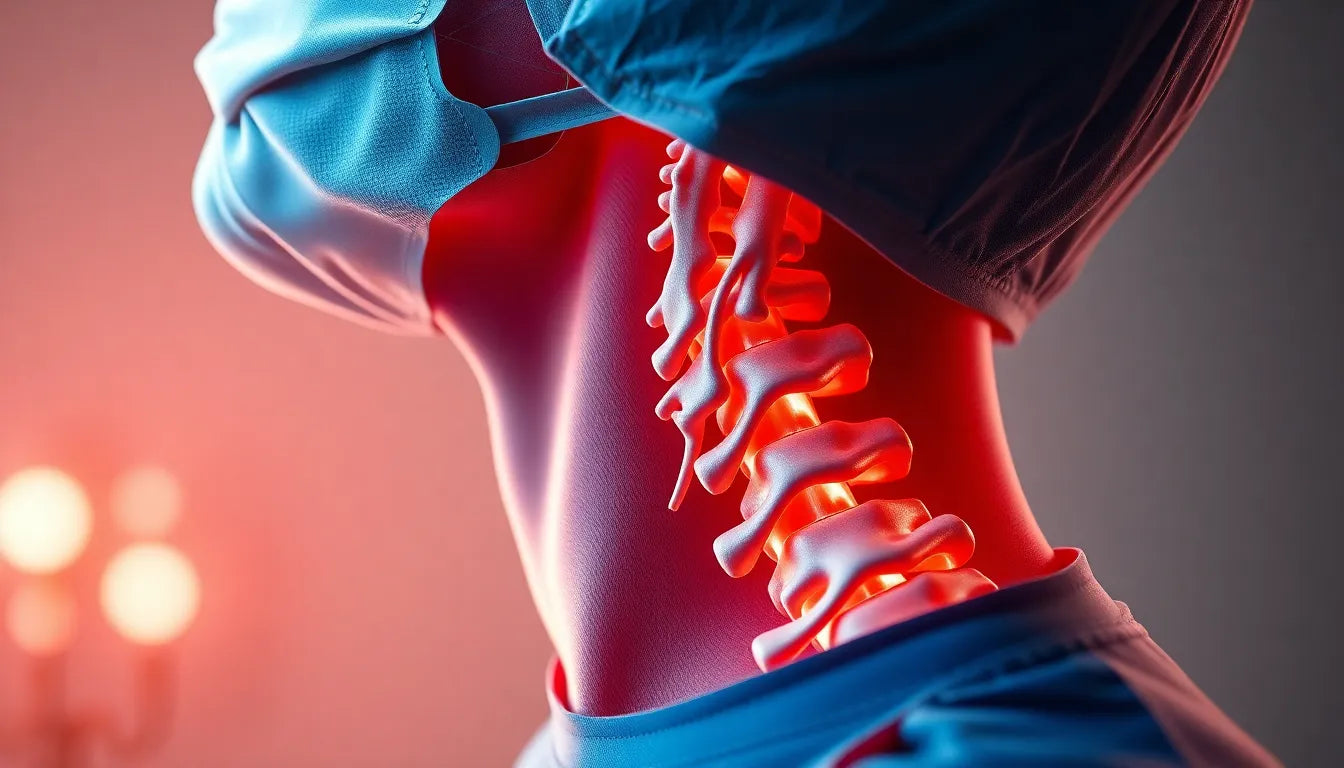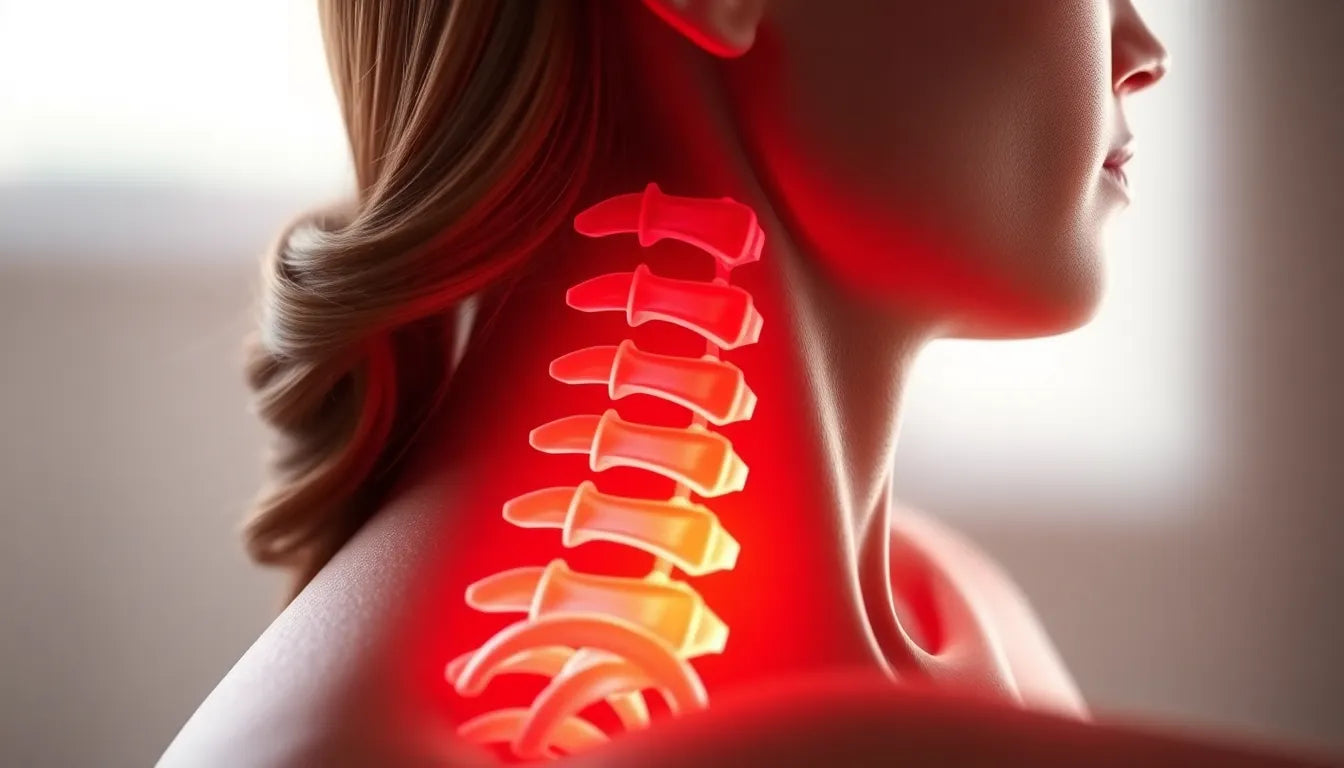Understanding herniated discs is essential for individuals experiencing back pain or discomfort. A herniated disc, often referred to as a slipped or ruptured disc, occurs when the soft inner core of a spinal disc pushes through a crack in its tougher exterior. This condition can result from age-related wear and tear, known as disc degeneration, or from an injury, such as lifting heavy objects improperly. The protrusion can irritate nearby nerves, leading to common symptoms like pain, numbness, and weakness in the limbs.
These symptoms can significantly impact daily life, making even simple tasks challenging. Individuals with herniated discs often find that their mobility is compromised, affecting their ability to perform everyday activities such as walking, bending, or sitting for extended periods. The psychological effects of chronic pain should not be underestimated either. Persistent discomfort can lead to stress and anxiety, further diminishing one's quality of life. Therefore, seeking appropriate treatment is crucial not only for physical relief but also for mental well-being.
The impact of herniated discs on daily life
A herniated disc can have a profound impact on an individual's daily routine. The pain and discomfort may limit physical activities, making it difficult to maintain an active lifestyle. This limitation can lead to a cycle of inactivity and muscle weakening, which may exacerbate the condition. Additionally, the constant battle with pain can lead to frustration and a sense of helplessness, affecting mental health and overall life satisfaction. Understanding the need for treatment and taking proactive steps towards recovery can help individuals regain control over their lives.
Overview of treatment options
Fortunately, a range of treatment options is available for those suffering from herniated discs. These options vary from conservative approaches to surgical interventions, depending on the severity of the condition and the individual's specific needs. Conservative treatments often include physical therapy, pain management through medication, and lifestyle modifications aimed at reducing strain on the spine. In more severe cases, surgical solutions such as microdiscectomy or spinal fusion may be considered. The primary goal of all treatment strategies is to alleviate pain, restore function, and improve the patient's quality of life.
By understanding the nature of herniated discs and the impact they can have, individuals can better appreciate the importance of seeking timely and effective treatment. Whether through non-surgical methods or surgical intervention, addressing a herniated disc can lead to significant improvements in mobility, pain relief, and overall well-being.
Conservative treatments for herniated discs
For many individuals, conservative treatments offer an effective first line of defense against the discomfort caused by herniated discs. These approaches focus on managing symptoms and promoting healing without the need for invasive procedures.
Lifestyle and home remedies
One of the simplest yet highly effective strategies involves lifestyle modifications. Rest is crucial, particularly in the initial stages of a herniated disc, to prevent further injury. However, complete bed rest is not recommended, as it can lead to muscle weakening and joint stiffness. Instead, a balanced approach of rest and gentle activity modification is advised. Over-the-counter pain medications, such as ibuprofen or acetaminophen, can help manage pain and inflammation, allowing individuals to maintain a level of activity that supports recovery.
Physical therapy and exercises
Engaging in physical therapy is another cornerstone of conservative treatment for herniated discs. A tailored physical therapy program aims to strengthen and stabilize the spine, reduce pressure on the affected disc, and improve overall flexibility and posture. Exercises such as pelvic tilts, gentle stretches, and core strengthening can significantly alleviate symptoms. A physical therapist can design a personalized exercise regimen that addresses specific needs, helping to restore mobility and function.
Heat and cold therapy
Alternating heat and cold therapy can provide substantial relief from the pain associated with herniated discs. Cold packs are effective in reducing inflammation and numbing sharp pain, while heat therapy helps relax tight muscles and improve blood flow to the affected area. Applying heat or cold for 15-20 minutes at a time can help manage pain and facilitate the healing process.
Advanced non-surgical treatments
For those who do not find sufficient relief through conservative measures, advanced non-surgical treatments offer additional options to address herniated disc symptoms.
Chiropractic care and massage therapy
Chiropractic care involves manual manipulation techniques that aim to relieve pressure on nerves caused by herniated discs. By adjusting the spine, chiropractors can help improve alignment and reduce pain. Similarly, massage therapy targets muscle tension and spasms, promoting relaxation and enhancing circulation. Both treatments can be effective in reducing discomfort and improving range of motion.
Acupuncture and alternative therapies
Acupuncture, a practice rooted in traditional Chinese medicine, involves the insertion of thin needles into specific points on the body to stimulate healing and pain relief. Many patients report positive outcomes, finding acupuncture to be a beneficial complementary treatment for managing herniated disc symptoms. Other alternative therapies, such as yoga and Pilates, can also support recovery by improving flexibility and core strength, further reducing strain on the spine.
Surgical options for severe cases
In cases where conservative and non-surgical treatments fail to provide adequate relief, surgical intervention may be considered. Surgery is typically reserved for severe cases where there is significant nerve compression or when symptoms persist despite other treatments.
Microdiscectomy
Microdiscectomy is a minimally invasive procedure that involves removing the portion of the herniated disc pressing on the nerve root. This surgery is known for its high success rate in alleviating leg pain and improving mobility. Recovery time is generally shorter compared to more invasive surgeries, with many patients experiencing significant relief within a few weeks.
Spinal fusion
Spinal fusion may be recommended when there is instability in the spine or when multiple discs are affected. This procedure involves joining two or more vertebrae to eliminate movement between them, providing stability and reducing pain. While spinal fusion can be effective, it carries risks such as reduced flexibility and the potential for adjacent segment disease, where stress is transferred to nearby discs.
Choosing the right treatment for a herniated disc depends on several factors, including the severity of symptoms, the individual's overall health, and personal preferences. Consulting with healthcare professionals can help determine the most appropriate approach, ensuring the best possible outcome for recovery and quality of life.
The role of ergonomics in prevention and management
Ergonomics plays a crucial role in both preventing and managing herniated discs. By minimizing strain on the spine, ergonomic solutions can significantly reduce the risk of disc issues and help manage existing conditions. Implementing ergonomic aids in daily life, such as adjustable chairs, supportive cushions, and sit-stand desks, can make a substantial difference in spinal health.
Setting up an ergonomic workspace is essential for individuals who spend long hours sitting. Ensuring that your chair supports the natural curve of the spine, keeping feet flat on the floor, and maintaining a monitor at eye level can prevent undue stress on the back. Additionally, taking regular breaks to stand, stretch, and move around can help maintain spinal flexibility and reduce the risk of disc problems.
Companies like Anodyne offer solutions that support spinal health through ergonomic design. Their products are designed to enhance comfort and promote proper posture, which can be particularly beneficial for individuals at risk of or dealing with herniated discs. By incorporating these aids into your routine, you can create a supportive environment that fosters spinal well-being.
Conclusion
In conclusion, understanding and addressing herniated discs through effective treatment options is vital for improving quality of life. From conservative approaches like lifestyle modifications and physical therapy to advanced treatments and surgical options, there are numerous paths to relief. Ergonomic solutions also play a significant role in both prevention and management, offering a practical way to support spinal health.
Consulting with healthcare professionals is essential for personalized advice and treatment plans. By taking proactive steps, individuals can find relief from the discomfort of herniated discs and regain control over their lives.
Frequently Asked Questions
What are the first steps to take if I suspect a herniated disc?
Initial steps include resting to prevent further injury, consulting with a healthcare provider for an accurate diagnosis, and undergoing imaging tests such as an MRI or CT scan to confirm the condition.
How long does it take to recover from a herniated disc?
Recovery time varies depending on the severity of the herniation and the treatment approach. Non-surgical recovery can take several weeks to a few months, while surgical recovery may require additional time for healing.
Are there exercises I should avoid with a herniated disc?
High-impact activities, heavy lifting, and exercises that involve twisting should be avoided. It's important to consult a physical therapist for exercises tailored to your condition to ensure safe and effective rehabilitation.
Can ergonomic aids really make a difference in managing herniated disc symptoms?
Yes, ergonomic aids can significantly reduce strain on the spine, improve posture, and alleviate symptoms. Proper ergonomic setup and tools can support spinal health and enhance comfort in daily activities.
When should surgery be considered for a herniated disc?
Surgery is typically considered when conservative treatments fail to relieve symptoms, or if there is significant nerve damage that affects mobility or causes severe pain. A healthcare provider can help determine if surgery is the appropriate course of action.























